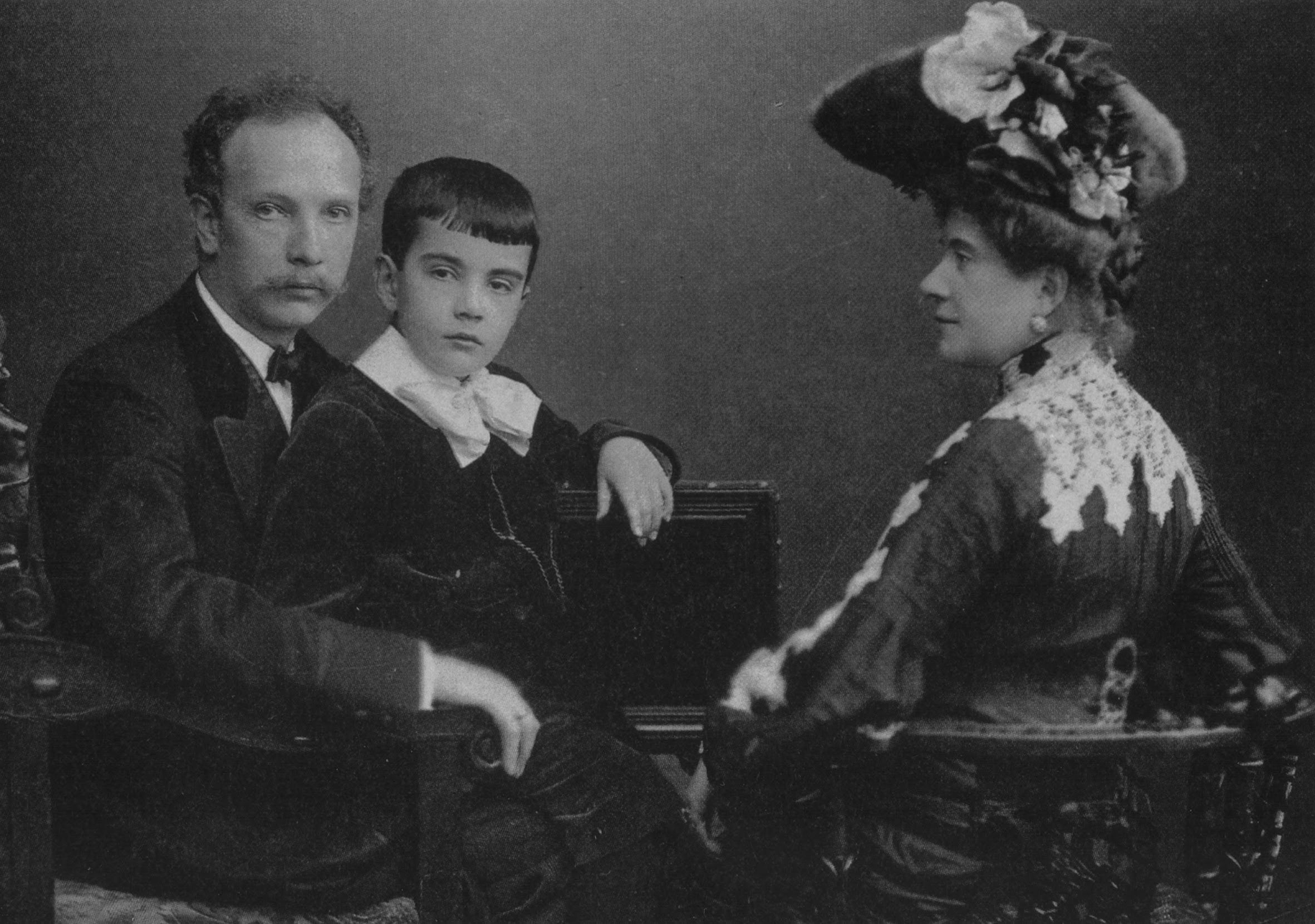-
03
-
03
-
03
-
03
-
03
-
03
-
03
-
03
-
03
-
03
-
03
-
03
-
03
-
03
-
03
-
03
-
03
-
-
-
03
-
03
-
03
-
03
-
03
-
03
-
03
-
03
-
-
03
-
03
-
03
-
03
-
03
-
-
03
-
03
-
03
-
03
-
-
03
Intimate Portraits: Richard Strauss’s Family Life Through Music
Thursday, August 8, 2024
Posted By:Patricia Josette Prokert
—
Richard Strauss’s (1864–1949) Cäcilie, Müttertändelei, and Ein Heldenleben provide some of the earliest intimate glimpses into the composer’s family life. These pieces present the listener and scholar alike with the incredible opportunity to view Strauss as both a monument of the twentieth century and an ordinary man. Understanding these compositions’ historical context enhances both the listening experience and the creative re-enactment of their performance.
Strauss met his future wife, soprano Pauline de Ahna (1863–1950), in the summer of 1887 when he assisted with her musical training. The relationship was tumultuous due to Pauline’s independent, sharp-tongued, and tactless nature. After two years Strauss abruptly ended his tutelage of her, although the two remained close. Not ten months later Franz Strauss, Richard’s father, had to intervene following yet another altercation between his son and Pauline, imploring Richard to mend the friendship.
An illustrative example of Pauline and Richard’s relationship came after the couple had become secretly engaged sometime before the end of March 1894. Pauline initially refused to accept the proposal because she wanted to continue her operatic career without the constraints of being a traditional wife, objections which her family with stern arguments. Strauss remained calm and steadfast while reassuring her that she was free to pursue her career after marriage. By the end of April all arguments and hesitations were put to rest, and the two were married on September 10, 1894.
Cäcilie was written on September 9,1894, mere hours before Strauss’s wedding. The text, full of longing and love, confirms Richard’s deep affection for Pauline. The lied features passionate operatic vocal lines and a thick accompanimental texture. The music is urgent and anticipates their impending union. This was the first of many songs dedicated to Pauline. It is obvious that Richard had her strong soprano voice in mind as he composed, a common theme for the majority of his lieder. In fact, after the birth of their son, Pauline became a great interpreter of her husband’s lieder, as they often traveled and performed the works together. True to his word, Pauline was free to continue her operatic career until she decided to retire from the stage in 1897 when their beloved son, Franz Alexander, was born.

Strauss learned of his son’s birth via telegram while on tour, his diary reflecting his joy and relief for the safe delivery. Starting from the boy’s first weeks, Strauss recorded his daily growth and activities in diaries and letters, whichshow his fierce love and devotion. Though less is known about Pauline’s relationship with Franz, Richard’s lieder, such as Müttertändelei (1899), illustrate her maternal adoration. The text is an ode to a mother’s delight over her child with vivid descriptions of a beautiful and cheerful baby who only brings happiness to the parent. The vocal line supports a light soprano voice, and the music perfectly reflects the text with its playful and lighthearted air.
The extent to which Strauss’s biography is represented in the tone poem Ein Heldenleben (1899) has been much debated in scholarly literature. However, the third movement titled The Hero’s Companion is indisputably based on Pauline. Following a performance in Paris, on March 4, 1900, famed French writer Romain Rolland questioned Strauss specifically about the hero’s companion. Roland quotes Strauss, confirming: “it’s my wife I wanted to portray. She is very complex, very much a woman, a little depraved, something of a flirt, never twice alike, every minute different from what she was the minute before.” The companion is represented by the solo violin; her primary themes portray a gentler feeling for the hero, which are interspersed with a-thematic cadenzas, including arpeggios, rapid scale passages, treble-stoppings, two-part inventions, and broken chords. The last two melodies in the movement reflect the very real and deep affections between the companion and her hero.
Pauline and Richard enjoyed a truly happy, stable marriage and family life to the very end. Pauline’s temperament perfectly complimented the composer, who continued to draw inspiration from his family in later compositions, notably the tone poem Symphony Domestica (1904) and the opera Intermezzo (1924). These works offer a window into Richard Strauss’s personal life and enhance our understanding of the composer beyond his public persona as well as his music. — © Patricia Prokert
Image: Photograph of Richard Strauss and Pauline with their son Franz, c. 1910

Patricia Josette Prokert is a University of Michigan PhD graduate in historical musicology. Her dissertation, Interpreting Race and Difference in the Operas of Richard Strauss, examined stereotypes of race and gender in Strauss’s Salome, Der Rosenkavalier, Die Frau ohne Schatten, and Friedenstag. She is interested in locating other instances of racial and/or gendered stereotypes in operas especially though the lens of cultural history. She has previously presented her work at annual and regional meetings of the American Musicological Society as well as at the University of Michigan, Ann Arbor, and the University of Victoria, B. C.
-
03
-
03
-
03
-
03
-
03
-
03
-
03
-
03
-
03
-
03
-
03
-
03
-
03
-
03
-
03
-
03
-
03
-
-
-
03
-
03
-
03
-
03
-
03
-
03
-
03
-
03
-
-
03
-
03
-
03
-
03
-
03
-
-
03
-
03
-
03
-
03
-
-
03